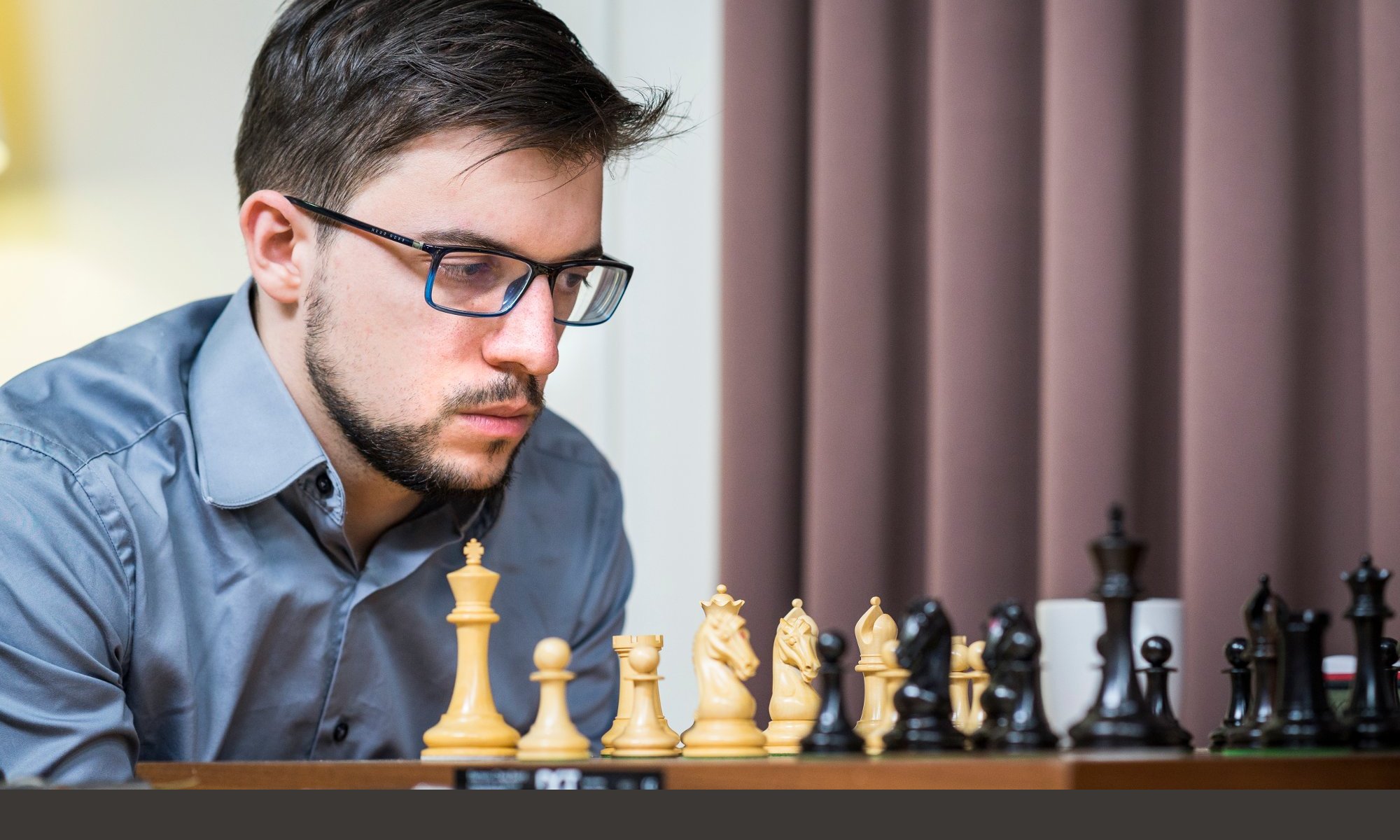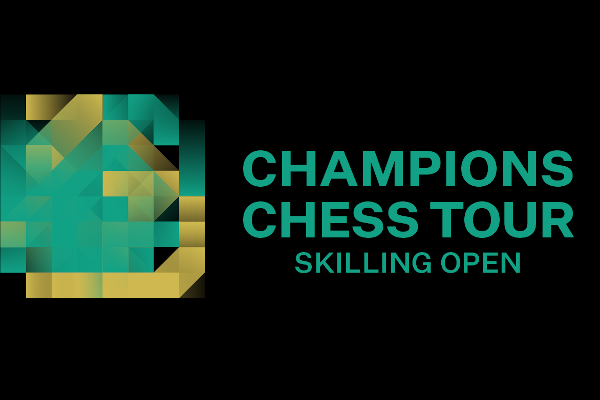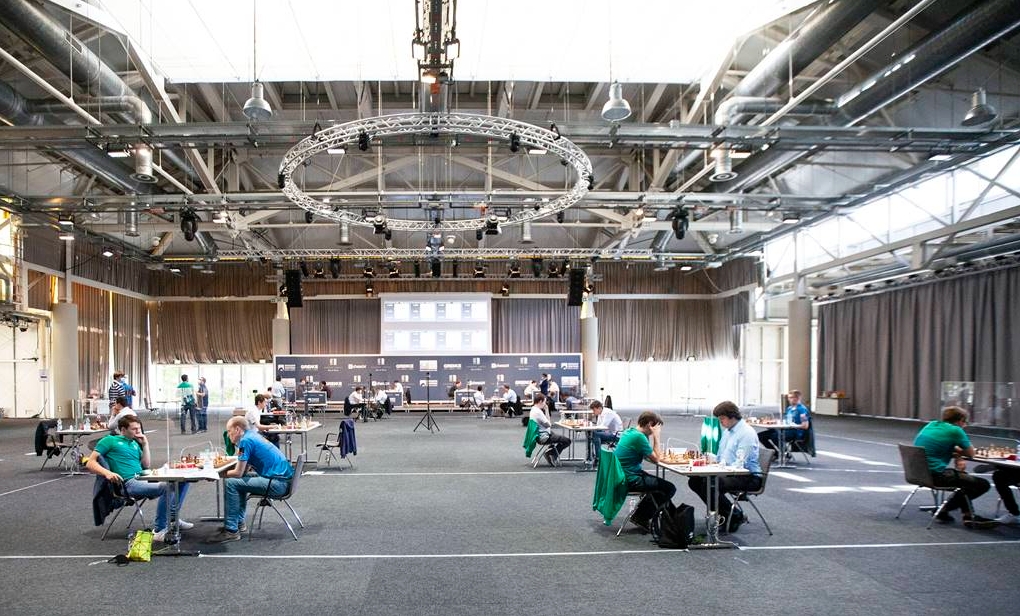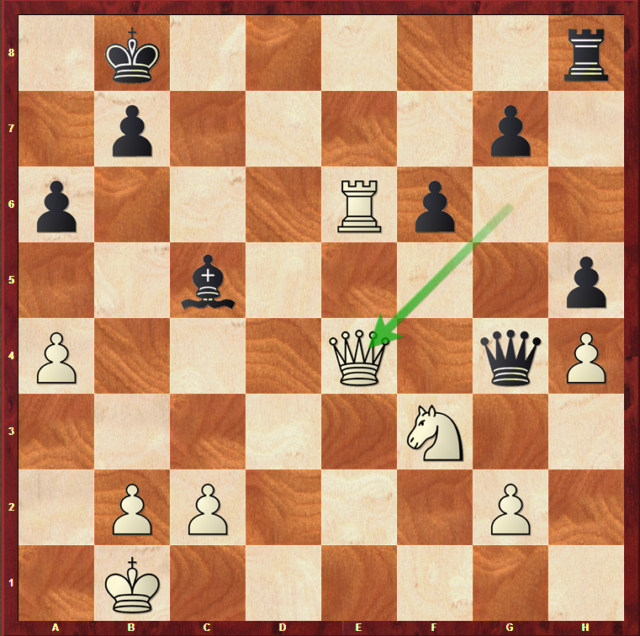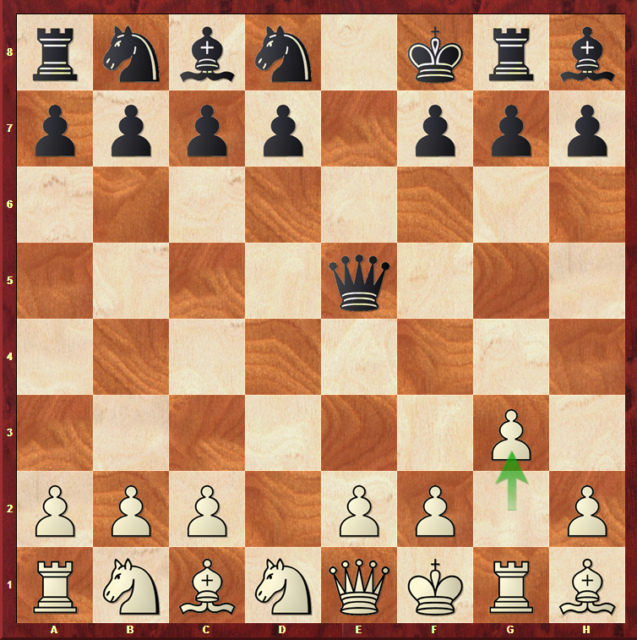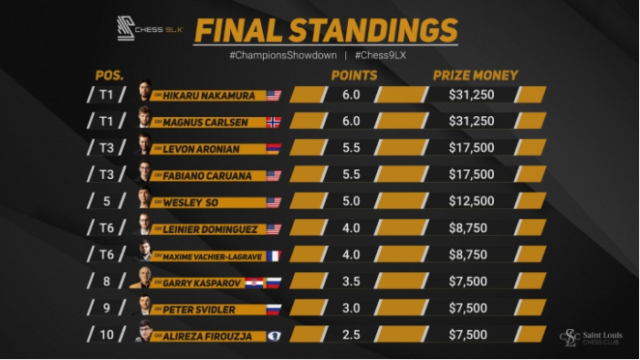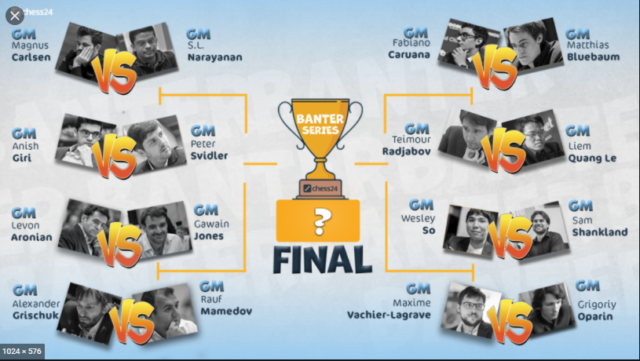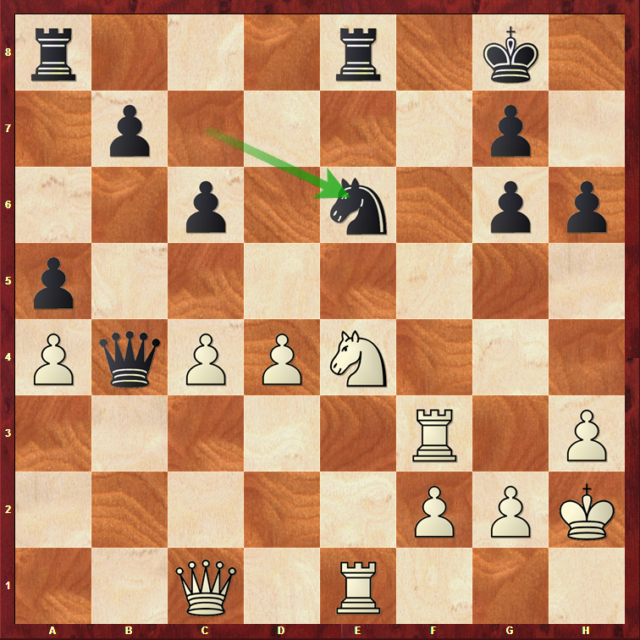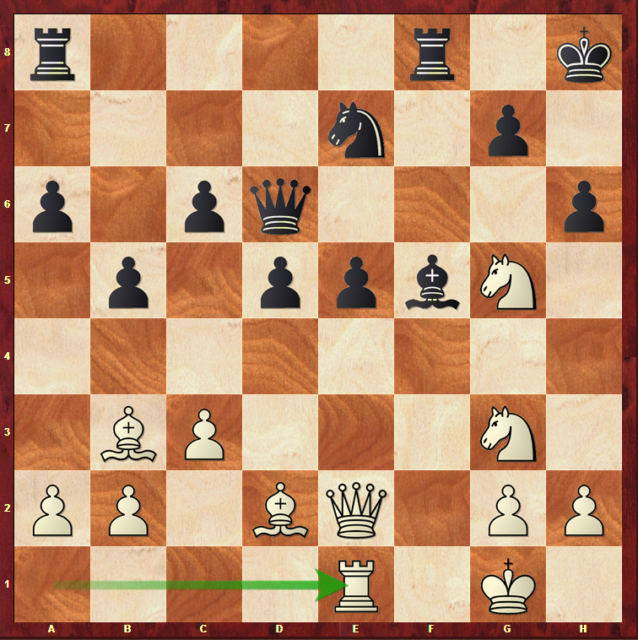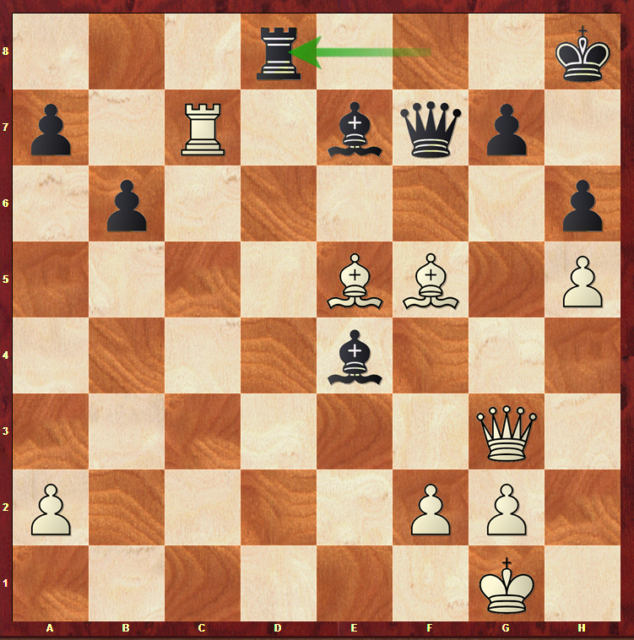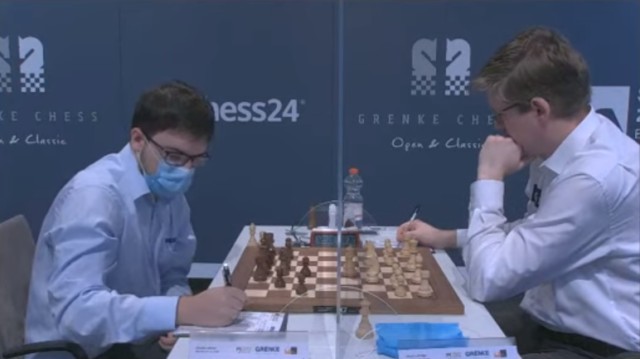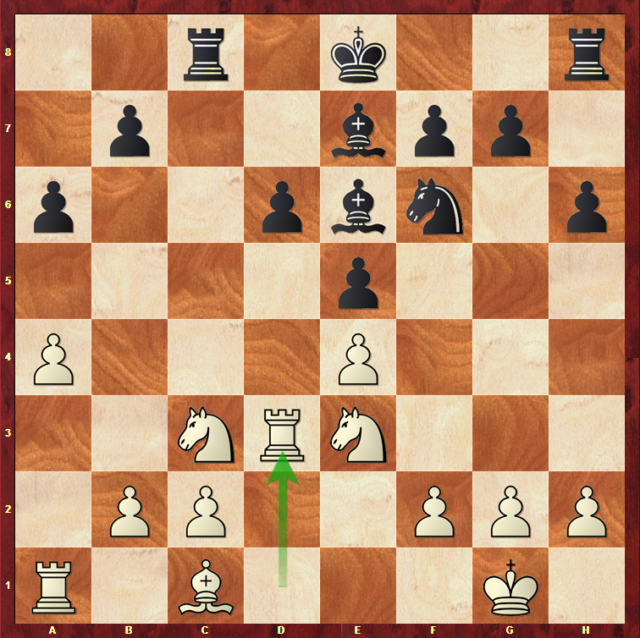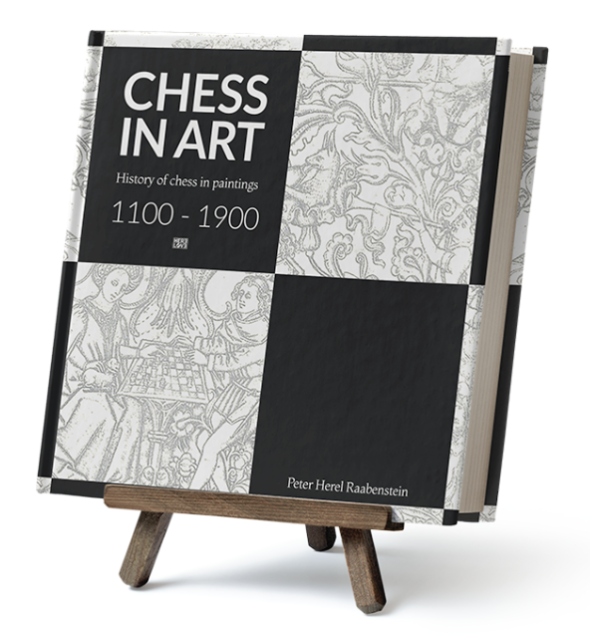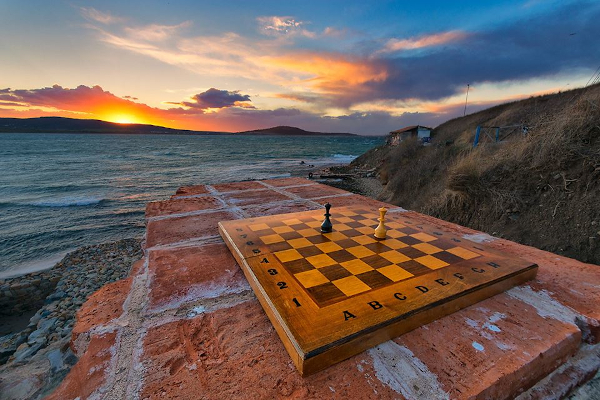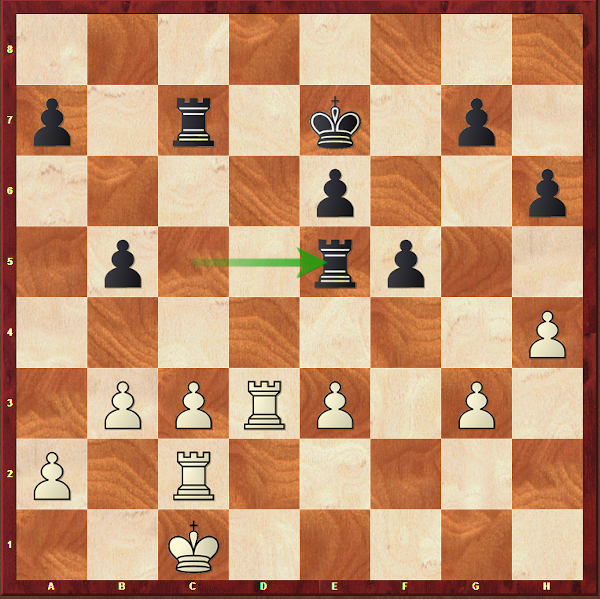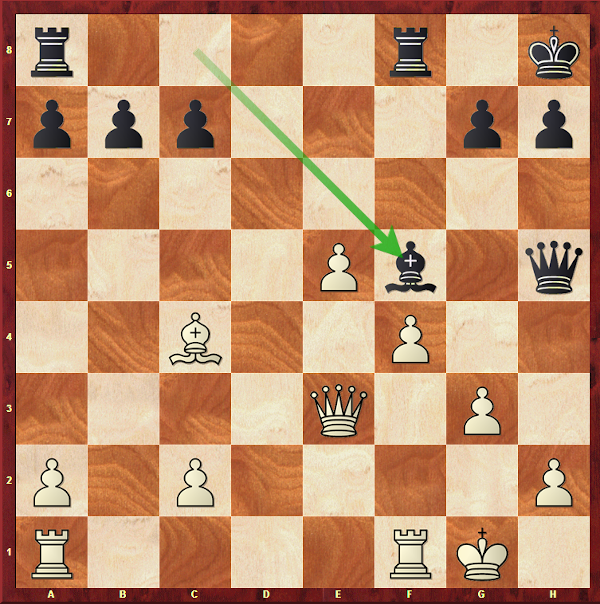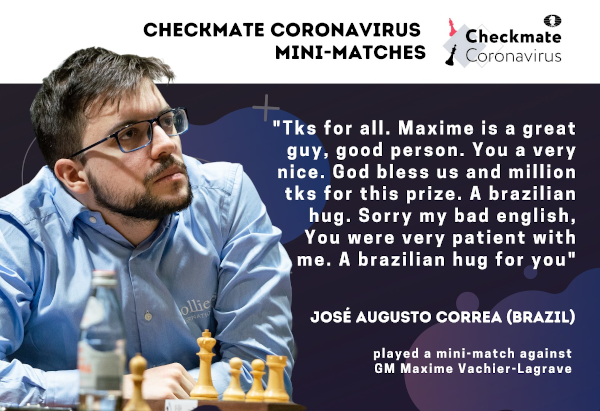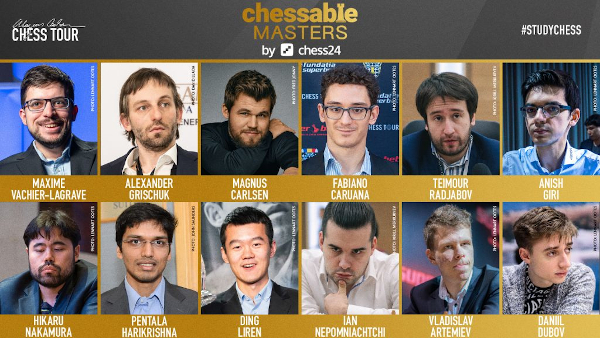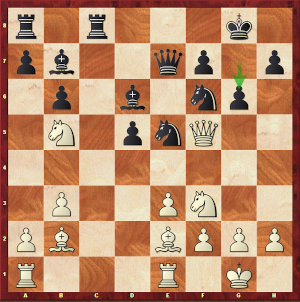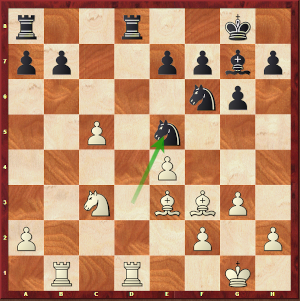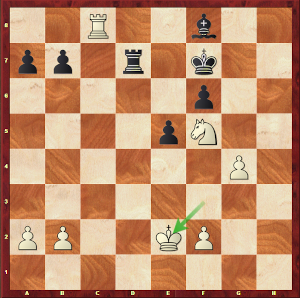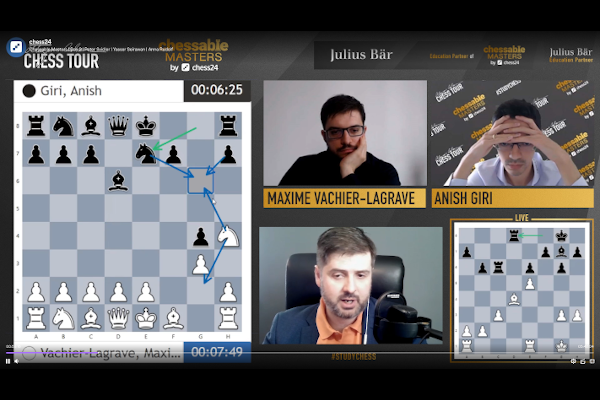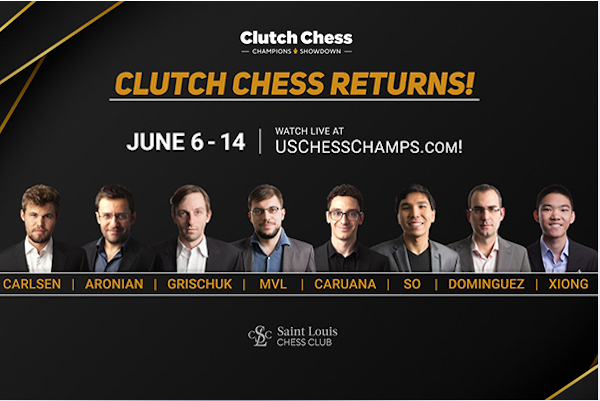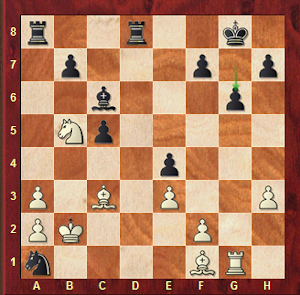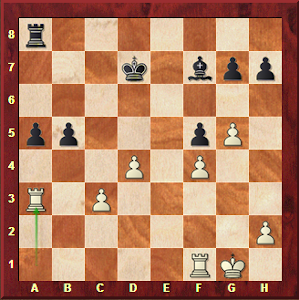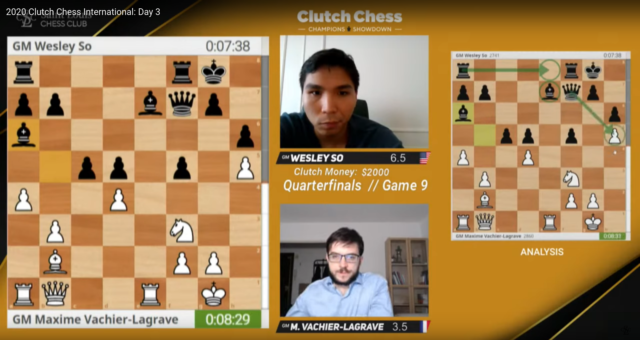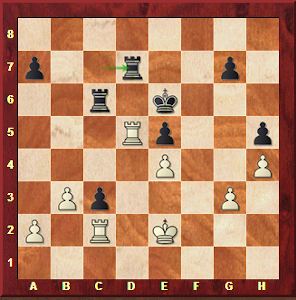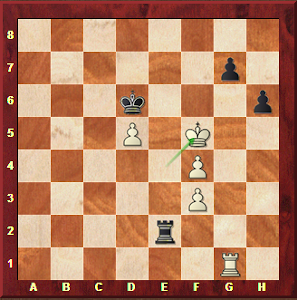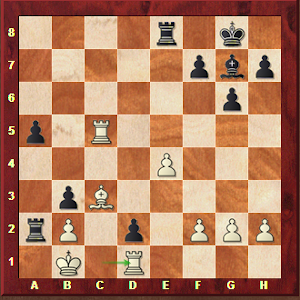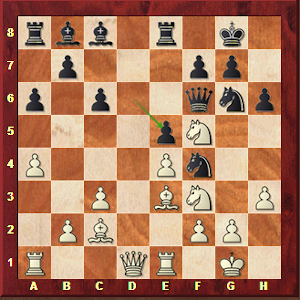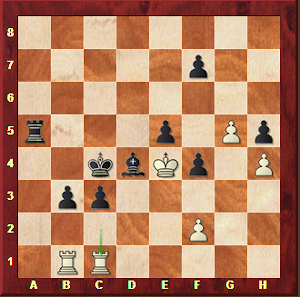Magnus Carlsen always thinks big. After the Carlsen Tour born out of the pandemic, he and his associates have decided to go for it again with a new online circuit, the Champions Tour. This time it will be spread over almost a year and will consist of 10 tournaments in a unique nine-day format. The first of these, held at the end of November, was the Skilling Open. Overall, I found the competition was very well attended, with quite a few viewers; and quite a lot of support for me as well, which of course helped.
This circuit offers me the chance to show that I can do better than in the previous online Tour, so I decided to approach the competition in a rather serious way, with notably more rigour and preparation 🙂 . Clearly, I was better equipped at all levels for this tournament. I really wanted to see if I could compete with the best this time 🙂 .
On the whole, I am rather satisfied with the level of play I have shown, especially in defence. It also went better in the openings, where I came back quite a bit to my favourite lines, Najdorf and Grünfeld.
It’s true that in this period where there aren’t many physical tournaments, this Tour is very welcome. This being said, the danger of such a dense circuit, composed of 10 tournaments – even if probably nobody will play them all – is fatigue. By the way, these tournaments are very tiring in terms of energy. About five hours of play every day – and that’s not five hours of play in a classical game. It’s five consecutive games, and that’s a lot; that’s five times as many key moments, intense moments, sometimes with turnarounds. It’s obviously very, very complicated to manage.
PRELIMINARY STAGE
Even though I finished the first day of the Preliminaries at -1, I was still happy, in the sense that I knew I was there, and that if I kept this level of play, I would qualify. Paradoxically on the second day, I can’t say I was that satisfied even though I won two games, because I felt I was starting to run out of energy at the end of the day.
These were in fact the first signs of what would happen next, especially in the quarter final’s second day. On the third and last day of the Preliminaries, the turning point happened to be my game against Svidler:
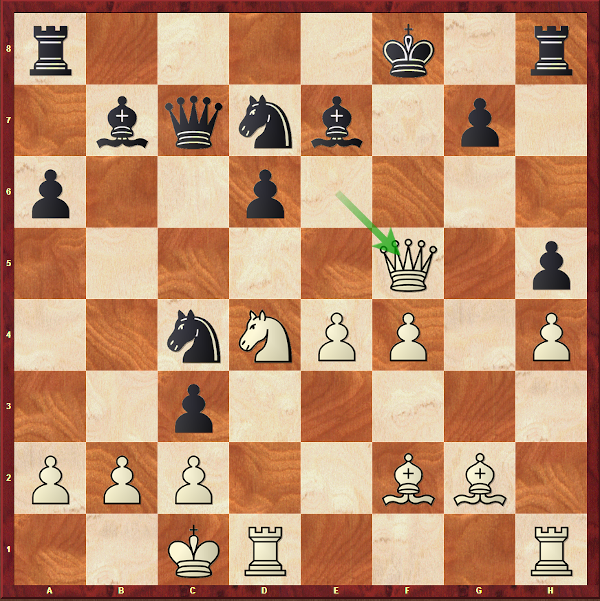
In this tactically very complex position, I played 21…Kg8 because after 21…Bf6, I feared 22.e5! (but not 22.Ne6+ Ke7 23.Nxc7?? cxb2+ 24.Kb1 Na3 mate!). After 22.Qe6+ Kh7, I would have taken the draw in case of 23.Qf5+ Kg8 because I didn’t see myself taking the risk 23…Kh6!?. But Peter preferred to continue with 23.Bh3 (if 23.b3, the other way of not repeating moves, I wanted 23…Qa5, and even the vicious 23…Nde5!? was possible). That’s where I did the irreparable with 23…Bf6? ; it’s hard to justify why I didn’t take b2 with check before, but I just thought I had time and that he could never play b3. But now after 24.Bf5+ Kh6 25.b3! I am simply busted because the planned reply 25…Qa5 would have been refuted by 26.Rdg1! which gives the d1 square to the White King while completing the mating attack (1-0, 40 moves).
Against Ding Liren in the penultimate round, there was an interesting moment in the opposite-coloured Bishop endgame.
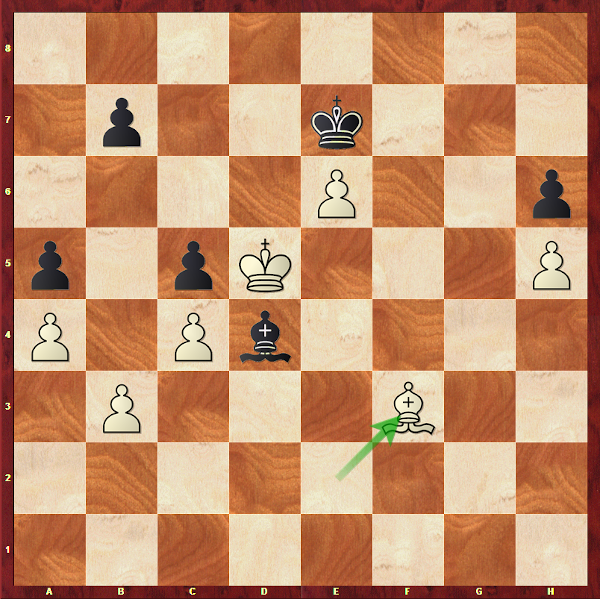
Here Ding played 43…Bf2 and waited for my King to slide to f5 before playing …b6 (Draw, 50 moves). This was the most relevant choice because the impression that there is a fortress simply by playing 43…b6? 44.Bg4 Be3 45.Kc6 Bd2 46.Kxb6 Bb4 is an illusion. Those who have studied these endings a little will quickly notice that the break on b4 is in the air! It is necessary to prepare this move correctly, and if it is in no way forced, the long variation which follows illustrates well that the fortress certainly does not hold: 47.Kc6 Ba3 48.Kd5 Bb4 49.Ke5 Bc3+ 50.Kf5 Bd2 51.Bf3 Be1 52.Bd5 Bd2 53.Kg6 Be3 (54.b4! would follow in any case against any other move) 54.b4! cxb4 55.c5! Bxc5 56.Kxh6 Kf6 57.Kh7 Be3 58.Kg8 Bh6 59.Bb3 Ke7 (59…Be3 60.Kf8 Bc5+ 61.Ke8) 60.Kh7 Bf4 61.Kg6 Be3 62.h6 Bd4 63.h7 Bc3 64.Kf5 Bb2 65.Ke4 Kd6 66.Bd5 b3 (sooner or later forced in order to get …Fc3, because otherwise white plays Kd3-c4-b5-xa5 and wins with the a pawn) 67.Bxb3 Bh8 68.Bd5 Bg7 69.Kd3 Bh8 70.Kc4 Bg7 71.Kb5 Bc3 72.h8=Q Bxh8 73.Kxa5 Bf6 74.Ba2 Kc5 75.Ka6 Kc6 76.a5 with a trivial win.
It was ultimately a defeat of Alireza Firouzja in the last round that allowed me to qualify for the quarter-finals at his expense…
In this preliminary phase, I think I was not paid very well for my efforts. It is true that I qualified a bit by a miracle at the end, but it is also clear that considering the games themselves, I could have done it much more comfortably.
¼ FINAL: MVL-NAKAMURA
Objectively, this match turned out to be really unclear and very tense, and could easily have gone either way. I won the first set a bit of a snatch and then collapsed in the second, but I still had opportunities in the tiebreak that I could have – and should have – converted.
I opened the score in the first game, in one of the most analysed variations of the Berlin Defense.
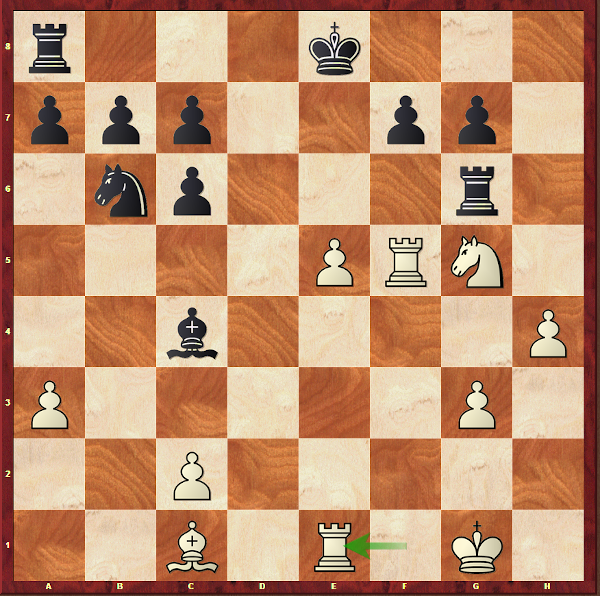
In this exact position, during the Candidates Tournament in March, Grischuk had played 26…Ke7. After a long think, Hikaru opted for 26…Be6?, a bad move. I suspect that he was not so well prepared or that he didn’t remember the lines correctly. In any case, I was able to calculate the nice sequence 27.Rf2 Rd8 28.h5 Rh6 29.Nxf7 Bxf7 30.Bxh6 gxh6 31.e6! Bxh5 32.g4! (deflecting the Bishop from the promotion square of the e-pawn) 32…Bxg4 (32…Bg6 33.Rf6) 33.e7 Nd7 (with the Bishop on g4, 33…Rc8? is not possible anymore because of 34.Rf8+) 34.exd8=Q+ Kxd8 35.Rf7 with an ending that looks won, but which is not so simple at all in reality. After 35…h5 36.Rg7 Nc5 37.Re5 b6, I was almost sure that the direct transition by 38.Rg8+?! Kd7 39.Rxc5 bxc5 40.Ra8 would not be enough to win; indeed, after 40…c4! 41.c3 (41.Rxa5 c3! and the c2-pawn becomes too vulnerable) 41…c5 42.Rxa5 Kc6 followed by …Kb6, there are still three black pawns on the c-file, and the a-pawn is very well controlled. So I preferred to start with 38.Kf2, and I was expecting 38…Na6! after which I still don’t know if White can win. I looked a bit at it after the tournament, but so far I don’t see an entry point for white. On the other hand, after his unfortunate choice of 38…a5?, this time I was able to sac an exchange back under good circumstances, because after 39.Rxc5! bxc5 40.Rg5 Kc8 41.Rxc5 Kb7 42.Rxa5 Kb6 43.Rg5, Black has a version of the endgame with one of the c pawns missing, making the technical realisation much easier (1-0, 52 moves).
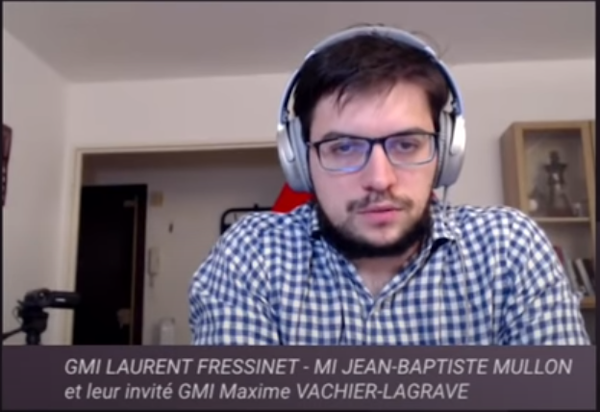
In the last game of this first set – where a draw was enough for me – I quickly took a decisive advantage with black. But Hikaru has the impressive quality of being able to find practical counter-chances in almost every situation. I even nearly lost this game, from a position three pawns up 🙂 . Fortunately, I defended rather well when the situation threatened to become critical, and I found the right moves when I had to.
We finally got the following position:
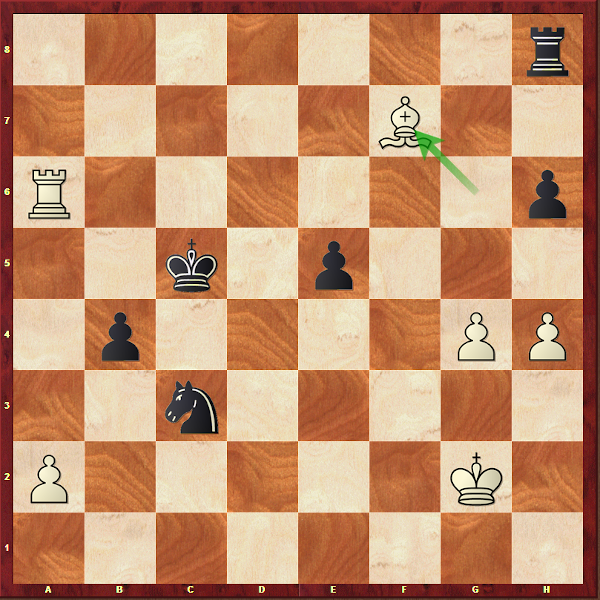
Here, Black threatens to brutally push his g-pawn, but I was able to calculate the following sequence: 45…e4 46.g5 hxg5 47. hxg5 e3 48. g6 e2 49.Re6 (if 49.g7, I had first seen 49…e1=Q 50.gxh8=Q Qe2+ 51.Kg3 Qxa6 with a probable draw, but the winning 49…Rg8! is much more efficient !) 49…Rh5! and liquidation is now total after 50.Kf2 Rf5+ 51.Ke1 Rf1+ 52.Kd2 Rd1+ 53.Kc2 e1=Q 54.Rxe1 Rxe1 55.g7 Rg1 56.g8=Q Rxg8 57.Bxg8 Nxa2 58.Bxa2 b3+ 59.Bxb3 Draw.
In the second set, I wasn’t into it and it showed…
So it all came down to the tie-break. In the first leg, I think we produced a very high quality game for blitz.
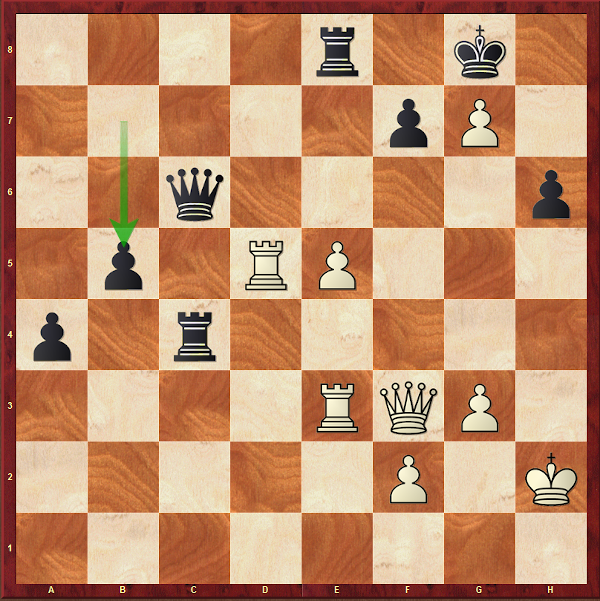
Here, I think that Hikaru may have let himself be exhilarated by the position and that he wanted to play for the win. In any case, he certainly missed 36.Qf6!, which causes a lot of problems. White threatens 37.Rd6 or 37.Rd8, the Rd5 is immune in view of 37.Qxh6, and the exchange of Queens leads to a miserable endgame because of the pawn duo f6-g7 which suffocates the Black King. After the correct and unique 36…Rc1 (preventing the Rd5 from moving because of mate on h1) 37.Rf3, I was expecting 37…Qxf6 38.exf6 which remains complicated, even if my instinct told me that it should be equal. On the other hand, neither he nor I imagined that black could avoid mate after 37…Qxd5 38.Qxh6 f5! ; it is obviously the machine that demonstrates it. Hikaru finally blundered with 37…Rh1+? 38.Kxh1 Qxd5 39.Qxh6! Qxf3+ 40.Kg1 f6 41.Qh8+ Kf7 42.e6+! Ke7 43.Qxe8+ Kxe8 44.g8=Q+ Ke7 45.Qf7+ Kd6 46.Qd7+ Kc5 47.e7 1-0.
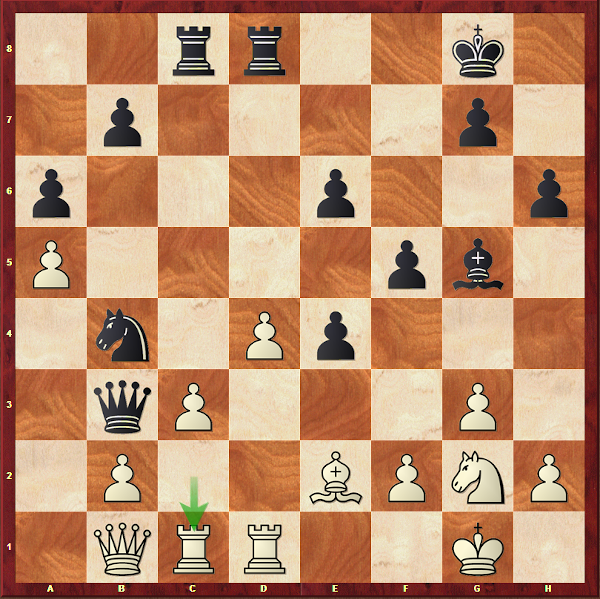
The opening of the second blitz, where a draw was enough for me, went like a dream, when I quickly won the exchange. I regret to have taken material right away though, as the « draw blackmail » with 23…Na2! 24.Rc2 Nb4 would have forced him to play 25.Rcd2 Bxd2 26.Rxd2 Nd5 with an easier winning position. After 23…Bxc1 24.Rxc1 Nd5 25.f3, a straightforward liquidation solution existed however, guaranteeing at least a draw in the endgame… Simply 25…Rxc3! 26.bxc3 Qxb1 27.Rxb1 Nxc3 28.Rb2 Nxe2+ 29.Rxe2 exf3 and it would have been curtains on the match! Instead, I played 25…exf3?! 26.Bxf3 Qb5?! and in this position, it’s no more simple at all ; there are already counter-chances for white, based on the position of my king, on my black squares weaknesses, and on his white-squared Bishop, which is quite powerful. It’s not easy to manage such a position in a blitz game and the rest of the game was the proof of it! I quickly got into a lot of trouble whereas normally, after 22…Nb4, the game should have been over (1-0, 54 moves).
After this big miss, I couldn’t do better than a draw with white in the Armageddon. signing my elimination from the tournament.
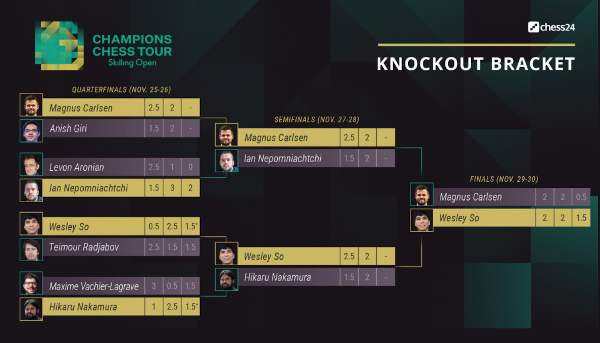
Congratulations to Wesley So for his final victory in the tie-break against Carlsen himself.
For my part, I am happy to be qualified for the next Tour tournament, which will start just after Christmas. I will try to do even better in terms of quality of play.
In the meantime, I will be competing in the semi-final of the Speed Chess Championship against Carlsen, on the 11th of December, 6pm CET.
Maxime’s games:
QUEEN’S GAMBIT
The series produced by Netflix is all the rage and everyone is talking about it. As for me, I was on the whole pleasantly surprised by the way in which the world of chess was portrayed, as well as by the game scenes themselves. In addition, the series is full of great images, with a nice soundtrack. On all these aspects, I have almost no complaints, especially since the acting of the lead actress, Anya Taylor-Joy, is excellent. But the flaw in Queen’s Gambit, in my opinion, is the script itself, which seems to me to be too light, as if a little sloppy. This reservation prevented me from really getting into the story and fully appreciating the series.
I had the opportunity to give my opinion to the daily Libération, on the series itself and on the situation in the chess world in general. Read it there: https://www.liberation.fr/sports/2020/12/04/echecs-the-queen-s-gambit-est-le-plus-gros-coup-mediatique-depuis-deep-blue-contre-kasparov_1807526 (paying article in French).
